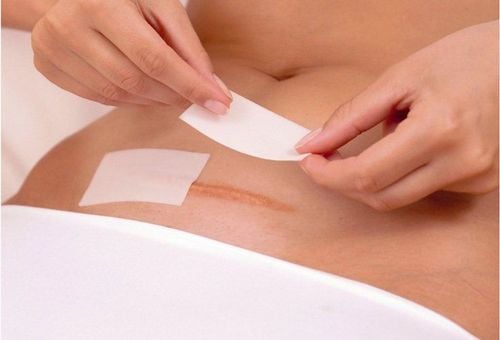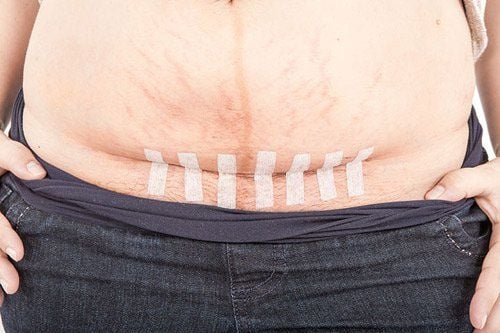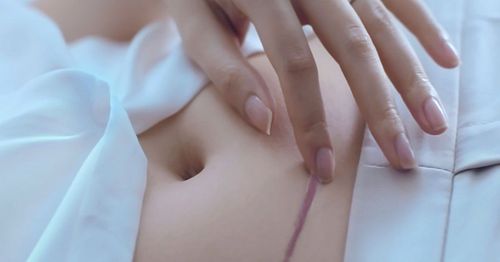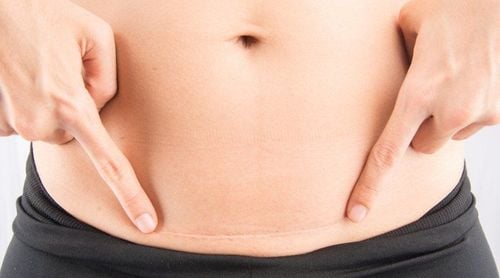This is an automatically translated article.
The article was professionally consulted by Doctor Nguyen Thi Man - Department of Obstetrics and Gynecology - Vinmec Danang International HospitalMotherhood is a woman's vocation. However, after each birth, the cesarean section makes many women self-deprecating because it is easy to leave large scars and lose aesthetics. Do not worry! Let's refer to the tips to help the postpartum incision heal quickly and limit leaving keloids.
1. Properly clean the cesarean section
Currently, the cesarean section is usually stitched by obstetricians with the standard or only withdrawn after 5-7 days.How clean the incision directly determines whether the scar will heal quickly or not, whether it will leave a big scar or not.
In the first days after cesarean section, mothers will be cared for and cleaned by medical staff to avoid infection and complications. During this time, the pregnant woman needs to keep the incision clean, do not remove the bandage by herself, do not wet the bandage...
48 hours after surgery, the medical staff will remove the bandage, clean it and evaluate it. cut. If the incision is dry, there is no swelling, pain or discharge, the incision will be completely open without the need for a bandage. At this time, the pregnant woman should pay attention not to let the skin around the incision and surrounding area become dirty. Pregnant women can bathe with clean water, then use gauze to dry the incision area gently
The patient will stay in the hospital for 4-5 days after surgery. After being discharged home, the patient can bathe normally with soap, then use a clean towel to dry the incision area. Avoid repeatedly touching the incision, avoid scratching if the skin of the incision has an itchy reaction.

2. Moderate exercise helps the cesarean section heal quickly
Currently, pregnant women are recommended to exercise early after surgery to increase circulation completely to help the incision heal quickly and prevent intestinal adhesions. At the hospital, the mother will be instructed to slowly move in bed on the first day after surgery, then sit up and get out of bed when the urinary catheter is removed to go to the toilet. After the third day, the mother will practice walking around the room and do almost normal activities.Movement after surgery will experience pain. Therefore, the postoperative pain relief regimen of the doctors is very important.
After the postpartum period, from 4-6 weeks, pregnant women recover their health and return to normal exercise activities.
3. Go to the doctor if the incision shows abnormal signs
In many cases, the incision is hard and painful to press. However, the mother does not need to worry, it is just because the sutures have not been exhausted. Only when the incision has abnormal signs, mothers who have had a caesarean section need to see a doctor. Here are some signs to watch out for for the cesarean section, the mother needs to go to the hospital to be checked. The incision is swollen, the skin around the incision is red. High fever over 38 degrees Celsius. The incision has fluid and pus, bad smell or bleeding. Vaginal discharge and strange odor. If you have one or more of these signs, you need to be checked by your doctor. Infected incisions can cause many dangerous complications such as puncture wound, blood infection or internal necrosis...4. Reasonable diet
Diet plays an important role in helping pregnant women recover soon as well as have more milk for lactation. Need to ensure enough nutrients, balance between food groups, eat cooked, drink boiled. The amount of food should be moderate, not too full.Food groups postpartum mothers should add to their daily regimen
Protein-rich foods, rich in iron such as pork, beef, chicken, fish, shrimp... help the incision heal quickly and prevent anemia due to iron deficiency. Increase green vegetables and fruits to prevent constipation and supplement vitamins and minerals to increase resistance. Adding milk and dairy products to the daily menu helps increase the amount of calcium provided to the body of both mother and baby. Drink a lot of water. Some dairy-friendly dishes such as porridge, stewed pig's feet, stewed dog's feet, sweet potato, ripe papaya... mothers can alternately add them to the daily menu to provide enough milk for the baby to suckle.
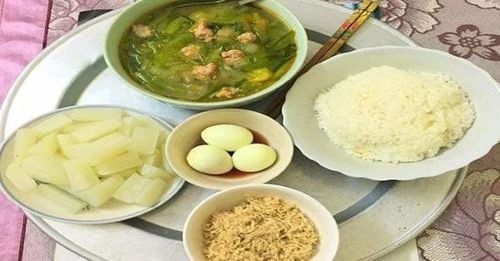
5. Take care of the scar area with skin care
Apply anti-scar skin cream as prescribed by the doctor:Depending on the location and condition of the incision, the doctor will prescribe a skin cream with topical medication to help the incision heal quickly and avoid keloids. Do not apply the cream with your hands, but use a clean cotton swab to apply the cream to the skin of the incision. Take good care of the incision in order to restore the incision early and limit the degree of keloid scars depending on the location of each pregnant woman. If you have a need for consultation and examination at hospitals of the national health system, please book an appointment on the website to be served.
Please dial HOTLINE for more information or register for an appointment HERE. Download MyVinmec app to make appointments faster and to manage your bookings easily.





